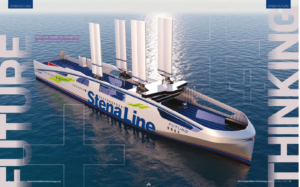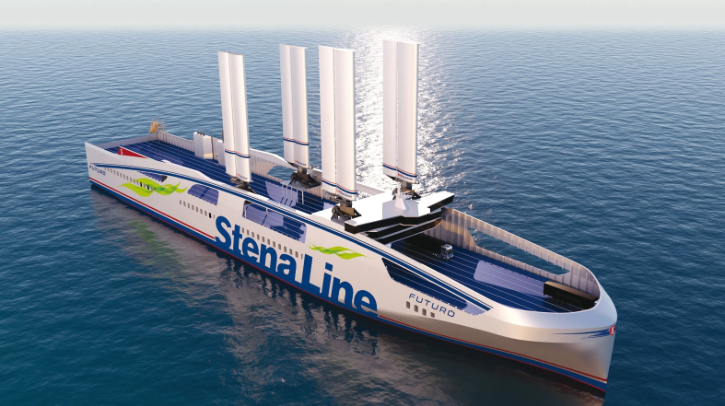Stena Line reveals its concept for a new generation of ro-ro vessels.
One of Stena Line’s goals is to reduce CO2 emissions by 30% by 2030. A big part of this push will involve decarbonizing its fleet by improving the efficiency of existing vessels and developing new types of craft. The company’s latest concept for the new generation of ships is Stena Futuro, a 240m-long ro-ro vessel to transport semitrailers and cars.
“We need to be at the forefront in developing tomorrow’s vessels. The Stena Futuro concept is an important step in that direction”
Niclas Mårtensson, Stena Line
Solar panels will contribute to the ship’s electricity needs.
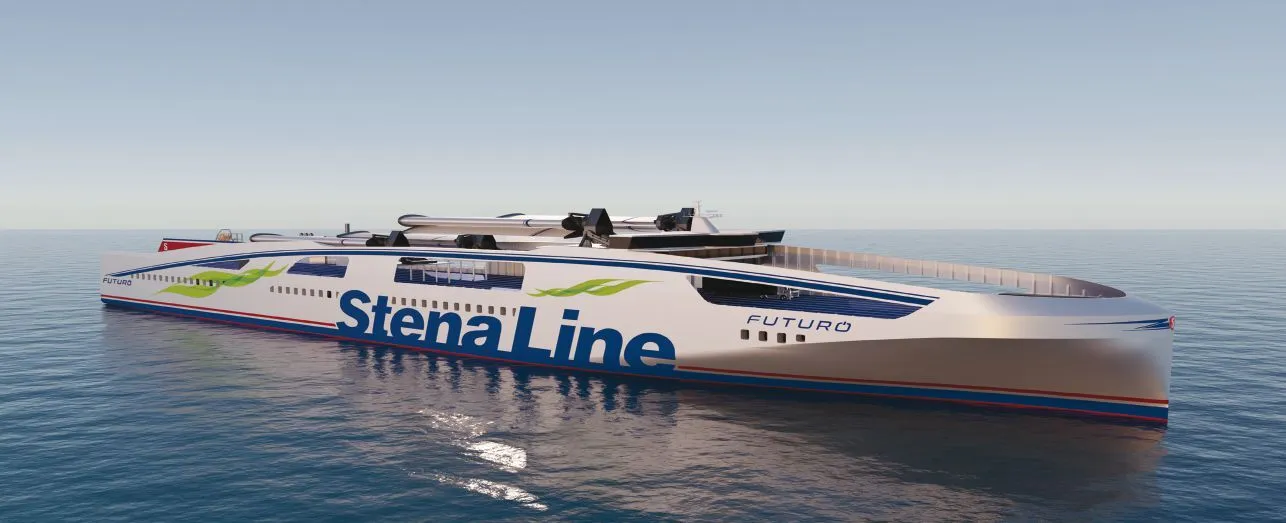
Stena Futuro will be equipped with technology to limit its environmental footprint. The vessel will have hybrid propulsion, with low-consumption batteries and engines that can run on several fuels. The battery system enables partial operation on electricity alone – when entering or leaving ports, for example.
The Stena Futuro concept includes four 40m-tall wing sails, which can be retracted when necessary. Stena’s developers, together with Swedish research institute RISE, recently conducted tests and simulations of the sails’ usage to document energy savings and how the sails affect the ship’s maneuverability and safety.
“The tests showed that Stena Futuro’s sails could potentially result in as much as 15% fuel savings,” says project manager Nicolas Bathfield. “We also confirmed that the vessel meets all requirements for stability and maneuverability in scenarios such as sudden wind shifts or quick course changes.”
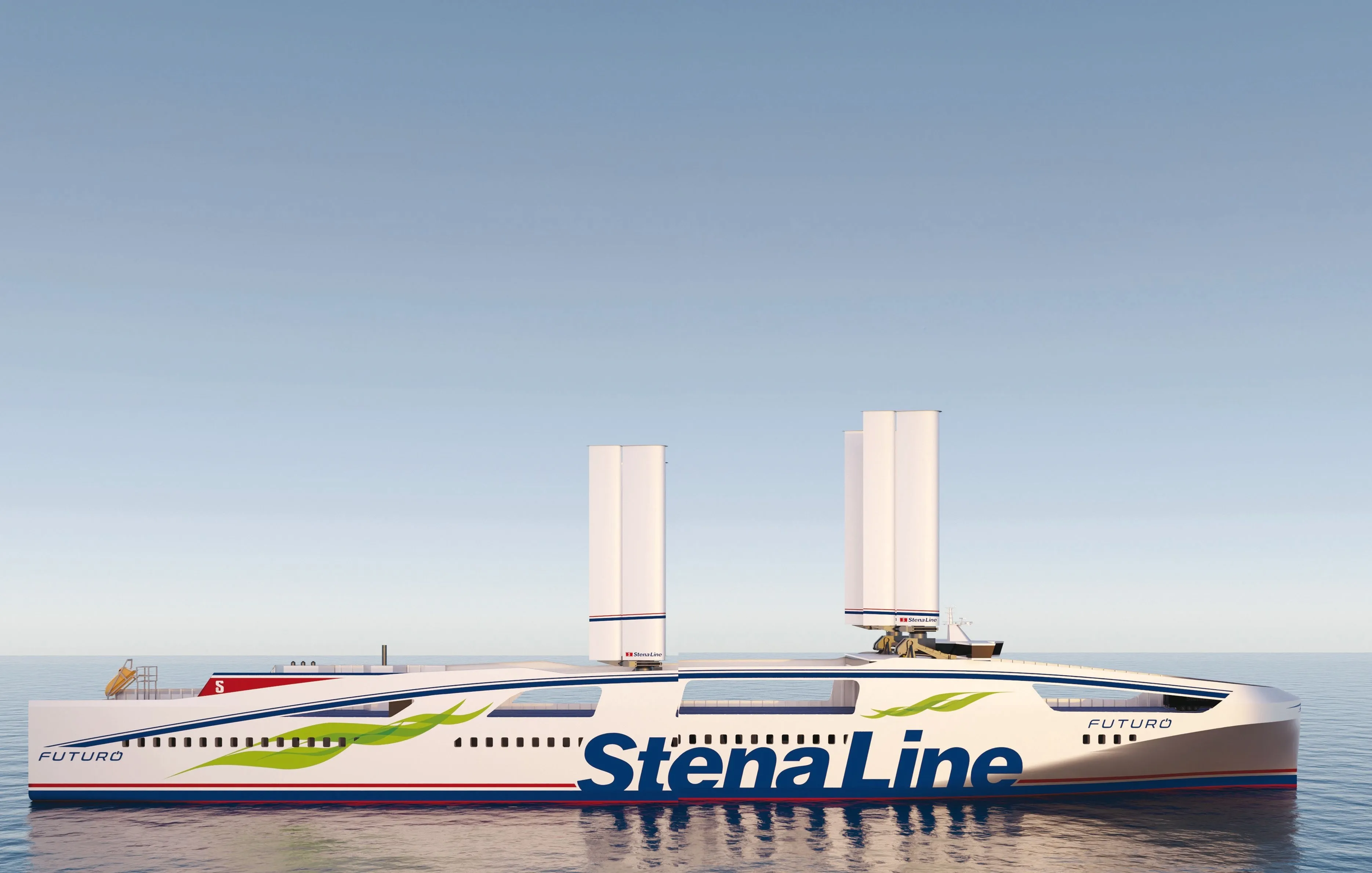
The hull of Stena Futuro will be equipped with an air lubrication system that releases small air bubbles beneath the waterline to reduce friction between the vessel and the water. A waste heat recovery system will make it possible to reuse the hot exhaust gases from the ship’s engines to meet onboard heating needs and support the generation of electric power.
Though there is currently no finalized plan for production of Stena Futuro, the ship’s concept design will play a vital role in tonnage planning over the coming years.
“We aim to help lead our industry in achieving the global climate goals,” says Niclas Mårtensson, Stena Line CEO. “We work toward this every day in our ongoing operations, but we also need to be at the forefront in developing tomorrow’s vessels. The Stena Futuro concept is an important step in that direction.”
This article was originally published in the April-May issue of Electric and Hybrid Marine Technology. To view the magazine in full, click here. 